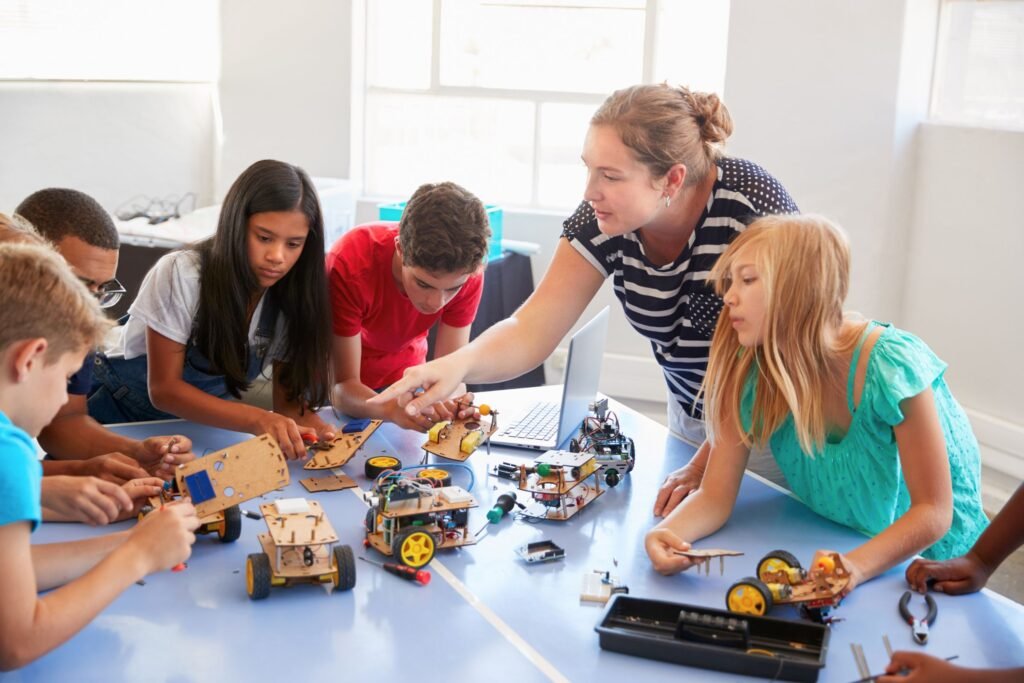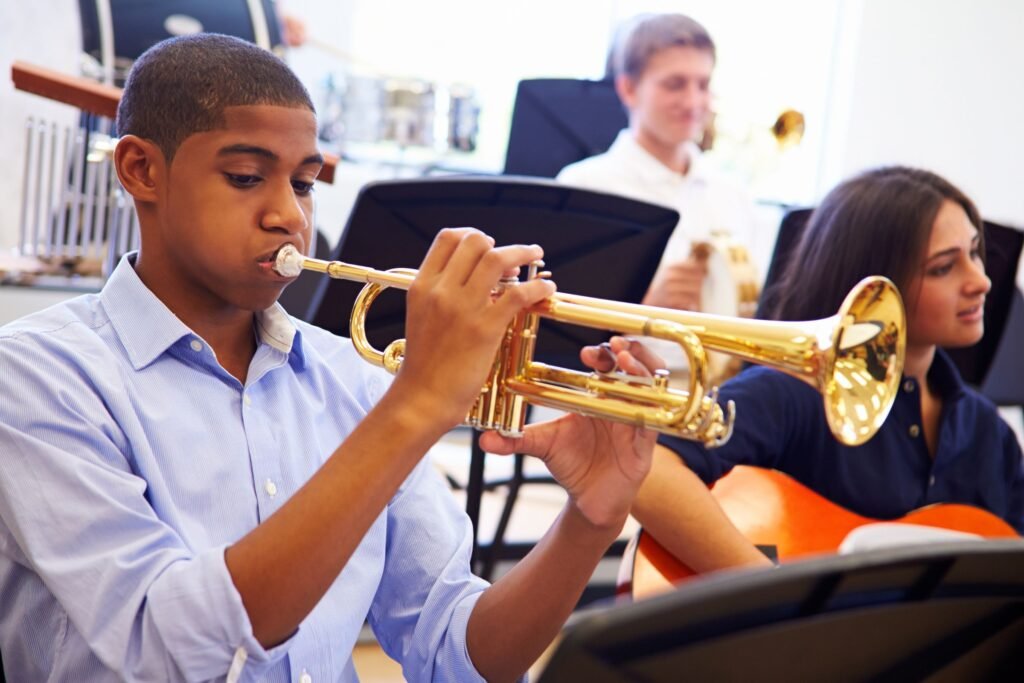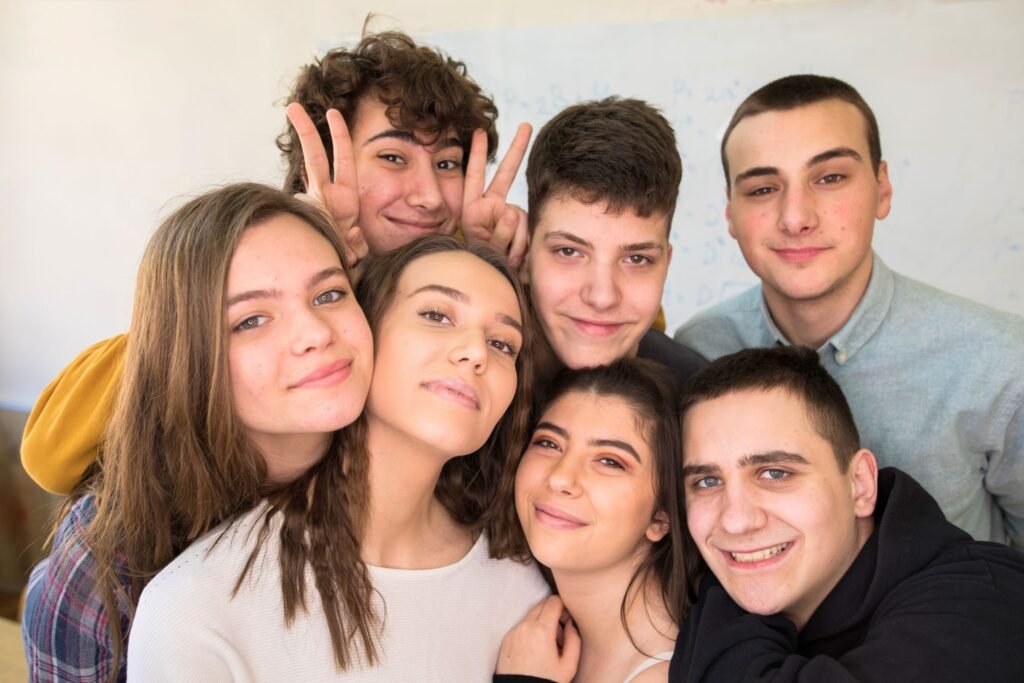The teenage years are a transformative chapter marked by self-discovery, growth, and the thrill of new beginnings. For adolescents stepping into a fresh academic chapter or joining a different team, the prospect of forging connections amidst unfamiliar faces can be both exhilarating and daunting. In this dynamic landscape, the art of building meaningful relationships becomes a cornerstone of the teenage experience. This guide aims to illuminate the path for teenagers venturing into new schools or teams, offering insights and practical tips on cultivating authentic connections that extend beyond the classroom. From the power of small talk to the significance of seeking guidance from mentors, these strategies are designed to empower teenagers to navigate the social intricacies with confidence, resilience, and an unwavering commitment to authenticity. As we embark on this journey together, let’s delve into the nuances of teenage social dynamics, unravel the threads of connection, and celebrate the richness that genuine relationships bring to the vibrant tapestry of adolescence.
Be Open and Approachable: Mastering the Art of Positive Vibes

Approachability is the cornerstone of forming new connections, and for teenagers navigating the social landscape of a new school or team, it’s an essential skill. Creating an inviting atmosphere not only attracts potential friends but also makes the overall transition smoother. Here are some detailed strategies to enhance your approachability:
Warm Smiles Speak Volumes
A genuine smile is a universal invitation. When you enter a new environment, especially during the initial days, wear a friendly smile. It instantly signals that you are approachable and open to interaction. Practice smiling naturally, and let it become a reflex when making eye contact with your peers.
Master the Art of Eye Contact
Maintaining eye contact demonstrates confidence and sincerity. When engaging in conversations, make eye contact without staring, as it shows you are actively listening and genuinely interested in what others have to say. Be mindful of cultural differences and adjust your eye contact accordingly.
Use Open Body Language
Your body language conveys a powerful message. Avoid crossing your arms, as it can be perceived as defensive or disinterested. Instead, keep your body language open – stand or sit comfortably, and use gestures that signal receptiveness. This non-verbal communication can significantly impact how others perceive your approachability.
Approach Others First
Taking the initiative to approach others is a proactive way to establish connections. Don’t wait for people to come to you; seek out opportunities to introduce yourself. This could be in class, during breaks, or at extracurricular activities. A simple greeting can be the starting point for meaningful conversations.
Show Genuine Interest
When engaging in conversations, ask questions and actively listen to the responses. Showing genuine interest in others fosters a sense of connection. Avoid interrupting and ensure that the conversation is a two-way street. This not only helps you learn more about your peers but also leaves a positive impression.
Be Mindful of Your Tone
The tone of your voice plays a crucial role in how your communication is received. Speak clearly and at a moderate pace. Avoid sounding too loud or too soft, as finding the right balance contributes to an overall positive and approachable demeanor.
Share a Compliment
A well-placed compliment can break the ice and create a positive atmosphere. Complimenting someone on their achievements, style, or even a shared interest is a great way to initiate a conversation and make a favorable impression.
By incorporating these strategies into your daily interactions, you can enhance your approachability and create an environment where forming new connections becomes a natural and enjoyable part of your teenage experience.
Find Common Interests: Building Bonds Through Shared Passions

One of the most effective ways to forge connections in a new school or team is by discovering and cultivating common interests. Shared hobbies provide a natural and enjoyable foundation for friendships, creating a sense of camaraderie that transcends the challenges of transitioning to a new environment. Here’s a closer look at how you can navigate this terrain:
Explore Clubs and Organizations
Schools typically offer a variety of clubs and organizations catering to a diverse range of interests. Whether it’s a debate club, art society, or coding group, explore different options. Attend introductory meetings to get a feel for the atmosphere and meet like-minded individuals who share your passions.
Embrace Extracurricular Activities
Participating in extracurricular activities is not only a great way to enhance your skills but also a perfect avenue for forming connections. Whether it’s sports, music, drama, or community service, these activities often bring together individuals with similar interests, creating a fertile ground for friendships to blossom.
Attend School Events and Games
School events and sports games are excellent opportunities to connect with peers who share your enthusiasm. Attend football games, talent shows, or school fairs to mingle with fellow students outside the classroom setting. The shared experience of cheering for your school’s team or enjoying a performance can be a powerful bonding factor.
Initiate Conversations About Interests
When engaging with new acquaintances, express your interests and inquire about theirs. Sharing your passions can spark meaningful conversations and uncover common ground. Whether it’s a favorite book, a love for a particular subject, or a shared hobby, these commonalities provide a strong foundation for building connections.
Be Open to Trying New Things
While seeking common interests, be open to exploring new activities as well. Joining a sports team or trying out a creative pursuit you’ve never considered before can lead to unexpected connections. Embracing novelty not only broadens your horizons but also introduces you to a diverse group of potential friends.
Collaborate on Projects
If your school or team involves collaborative projects, seize the opportunity to work with others who share your interests. Collaborative efforts not only enhance your teamwork skills but also create a sense of camaraderie as you work toward a common goal.
Utilize Social Media and Online Platforms
In today’s digital age, social media and online platforms can be powerful tools for connecting with peers who share your interests. Join online communities or groups related to your hobbies, where you can engage in discussions, share experiences, and potentially meet individuals from your school or team.
By actively seeking out and nurturing common interests, you not only enhance your social experience but also lay the groundwork for lasting friendships in your new academic or team setting.
Observe and Adapt to Social Norms: Decoding the Unwritten Rules

Understanding and adapting to the social norms of a new school or team is crucial for a seamless integration process. Every institution has its unique dynamics, from subtle communication cues to established routines. Taking the time to observe and align yourself with these unwritten rules will not only help you navigate social interactions but also enable you to blend in effortlessly. Here’s a detailed guide on how to decode and adapt to these norms:
Watch and Learn During Breaks
Lunch and break times are excellent opportunities to observe the social landscape. Take note of where students gather, how they interact, and the types of conversations they engage in. Understanding the informal social spaces and dynamics during breaks can provide valuable insights into the school’s social fabric.
Listen to Conversations
Pay attention to the language and tone used by your peers. Each school or team has its unique communication style, including the use of slang, humor, and formality. Listening to conversations around you can help you align your communication style with the prevailing norms, making it easier to connect with others.
Dress Code Awareness
Schools often have dress codes that contribute to the overall atmosphere. Observe how students adhere to these guidelines and adapt your wardrobe accordingly. Dressing in a way that aligns with the prevailing dress code helps you fit in visually and minimizes the risk of standing out in a way that may make you uncomfortable.
Learn Social Cues
Non-verbal cues play a significant role in social interactions. Pay attention to body language, facial expressions, and gestures. Understanding these subtle cues will help you navigate social situations with greater ease, making you more attuned to the expectations of your peers.
Respect Hierarchy and Traditions
Schools often have established hierarchies and traditions that shape social interactions. Take note of these structures and show respect for established norms. Whether it’s acknowledging seniority or participating in school traditions, embracing these aspects fosters a sense of belonging and acceptance within the community.
Attend School Events and Gatherings
Participating in school events and gatherings provides firsthand experience of the prevailing social norms. Whether it’s a pep rally, a cultural event, or a school assembly, these occasions offer insights into the collective identity and values of the school community.
Seek Guidance from Peers
If you’re unsure about certain social norms, don’t hesitate to seek guidance from your peers. Initiating conversations with classmates or teammates can provide valuable insights and help you navigate unfamiliar terrain. Most people appreciate when others show a genuine interest in understanding and respecting the local social norms.
By observing and adapting to the social norms of your new school or team, you not only enhance your social integration but also demonstrate a willingness to embrace the community’s culture, fostering positive connections with your peers.
Initiate Small Talk: The Gateway to Meaningful Connections

In the intricate tapestry of social interactions, small talk acts as the delicate thread that weaves relationships together. As a teenager entering a new school or team, the art of initiating casual conversations holds immense power. Don’t underestimate the impact of these seemingly trivial exchanges – they serve as the gateway to more profound connections over time. Here’s how you can master the art of small talk and pave the way for meaningful relationships:
Start with Common Ground
Begin small talk by focusing on shared experiences, such as classes, teachers, or upcoming school events. Finding common ground establishes a connection and makes the conversation relatable for both parties. It creates a sense of camaraderie and signals that you are attuned to the immediate environment.
Ask Open-Ended Questions
Encourage more extended and meaningful conversations by asking open-ended questions. Instead of inquiring with a simple “yes” or “no” answer, prompt your peers to share their thoughts, experiences, and feelings. This not only enriches the conversation but also allows you to gain deeper insights into their personalities.
Be Mindful of Non-Verbal Cues
During small talk, pay attention to non-verbal cues such as body language and facial expressions. These signals provide valuable feedback on the other person’s comfort level and interest in the conversation. Adjust your approach accordingly to ensure the interaction remains positive and engaging.
Share a Personal Anecdote
Open up the conversation by sharing a lighthearted or relatable personal anecdote. This not only adds a touch of authenticity but also invites the other person to reciprocate. Shared experiences, even on a minor scale, create a sense of connection and shared understanding.
Stay Informed About Pop Culture
Stay informed about current trends, movies, music, and other elements of pop culture. This knowledge serves as a valuable asset during small talk, providing common topics that resonate with your peers. Being aware of popular culture references allows you to contribute to conversations and connect with others who share similar interests.
Gauge Comfort Zones
While initiating small talk, be mindful of your peer’s comfort zones. Some individuals may be more reserved, while others are open to more extensive conversations. Gradually gauge their responsiveness and adjust the depth of the discussion accordingly. Respectful awareness of comfort levels fosters a positive and enjoyable exchange.
Transition to Shared Interests
As small talk progresses, look for opportunities to transition into discussions about shared interests. Whether it’s a favorite hobby, sports team, or TV show, identifying common passions during casual conversations lays the foundation for more profound connections and potential friendships.
Mastering the art of small talk is a valuable skill that can significantly enhance your social experience in a new school or team. These seemingly inconsequential conversations serve as stepping stones to building meaningful relationships that can endure throughout your academic journey.
Be Yourself: The Power of Authenticity in Teen Social Dynamics

In the intricate dance of social interactions, authenticity emerges as a beacon of connection. As a teenager navigating the landscape of a new school or team, the temptation to conform may be strong, but the true key to meaningful relationships lies in embracing your individuality. Here’s a closer look at why being yourself is not only a powerful personal choice but also a magnet for like-minded connections:
Embrace Your Uniqueness
Each individual brings a distinct set of qualities, interests, and perspectives to the table. Instead of suppressing your uniqueness, celebrate it. Embrace your quirks, passions, and idiosyncrasies – these are the very elements that make you stand out and attract those who resonate with your authentic self.
Resist the Urge to Conform
In the quest to fit in, there may be a tendency to conform to societal or peer expectations. While adapting to new environments is natural, losing sight of your true self in the process can hinder genuine connections. Resist the urge to conform at the expense of your authenticity.
Build Confidence in Your Identity
Confidence in your identity radiates authenticity. Acknowledge and appreciate the qualities that make you unique. Confidence is magnetic and draws others who admire and respect individuals comfortable in their own skin.
Cultivate Self-Awareness
Understanding who you are and what you value is a crucial aspect of authenticity. Cultivate self-awareness by reflecting on your beliefs, passions, and aspirations. This self-discovery not only strengthens your sense of identity but also provides a solid foundation for genuine connections.
Attract Like-Minded Individuals
Being authentic acts as a natural filter, attracting individuals who appreciate you for who you are. These like-minded connections form the basis of meaningful friendships. Authenticity establishes a foundation of trust, as others recognize your genuine intentions and actions.
Foster a Positive Environment
Authenticity contributes to the creation of a positive and inclusive environment. When individuals bring their true selves to the table, it encourages others to do the same. This openness fosters a culture of acceptance, where diverse personalities can coexist harmoniously.
Navigate Challenges with Integrity
In the face of challenges or conflicts, staying true to yourself is a demonstration of integrity. Authentic individuals handle difficulties with honesty and grace, earning the respect of their peers. This integrity strengthens relationships and establishes you as someone others can rely on.
Embrace Growth While Staying True
Authenticity doesn’t mean stagnation. Embrace personal growth and evolution while staying true to your core values. As you navigate the teenage years, your interests and perspectives may evolve, and that’s perfectly natural. Authenticity lies in embracing these changes while maintaining your fundamental identity.
By being yourself, you not only enrich your own life but also contribute to the authenticity and diversity of the social fabric around you. Embrace your individuality, and you’ll find that genuine connections will naturally gravitate towards you.
Attend Social Events: Unleashing the Power of Connection Beyond the Classroom

As a teenager stepping into the vibrant world of a new school or team, attending social events emerges as a dynamic catalyst for building connections that extend beyond the academic realm. These events, ranging from school parties to gatherings, create a relaxed environment where authentic interactions can flourish. Here’s why actively participating in social events is key to enriching your social experience:
Break the Ice in a Relaxed Setting
Social events provide a laid-back setting conducive to breaking the ice. Unlike the formalities of the classroom, these occasions encourage informal conversations and interactions. The relaxed atmosphere fosters a sense of camaraderie, making it easier to initiate conversations and establish connections.
Expand Your Social Circle
Participating in social events allows you to expand your social circle beyond the confines of your immediate class or team. Whether it’s a school-wide event or a gathering organized by a club, these occasions bring together individuals from different backgrounds and interests, providing a diverse pool of potential connections.
Discover Shared Interests
The diversity of attendees at social events presents a unique opportunity to discover shared interests. Engaging in conversations about hobbies, music, or pop culture in a social setting allows you to identify common ground with others, paving the way for deeper connections.
Learn About Different Social Groups
Schools often consist of various social groups, each with its own dynamics and interests. Social events offer a glimpse into these diverse circles, allowing you to explore different facets of the school community. Attendees at these gatherings may include students from various grades, offering a chance to bridge generational gaps.
Showcase Your Personality
Social events provide a platform for showcasing your personality in a more informal setting. Whether you’re an extrovert who enjoys the dance floor or someone who thrives in engaging conversations, these occasions allow you to express yourself authentically, attracting individuals who resonate with your unique qualities.
Develop Networking Skills
Participating in social events hones your networking skills, an essential aspect of navigating both academic and professional environments. Learning to approach new people, strike up conversations, and leave positive impressions are valuable skills that extend far beyond the confines of school events.
Strengthen Community Bonds
Attending social events contributes to the overall sense of community within the school. Sharing experiences, creating memories, and celebrating together fosters a sense of belonging. The bonds formed at social gatherings often transcend the event itself, creating a foundation for lasting friendships.
Enhance Social Confidence
Regular participation in social events gradually enhances your social confidence. Interacting with peers in a relaxed setting builds familiarity and comfort, making it easier to navigate social interactions in various contexts. This increased confidence positively impacts your overall social experience.
By actively participating in social events, you not only enrich your social life but also contribute to the vibrant tapestry of the school or team community. These occasions serve as invaluable opportunities to form connections, discover shared interests, and create lasting memories that define your teenage experience.
Seek Guidance from Teachers or Mentors: Navigating the Social Landscape with Wisdom

Amidst the whirlwind of transitioning to a new school or team, the wisdom and guidance of teachers and mentors emerge as invaluable assets. Beyond their roles as educators, these mentors possess insights into the intricate social dynamics that shape the school environment. Seeking their guidance not only offers a roadmap for navigating the complexities of social interactions but also fosters a supportive and enriching learning experience. Here’s why turning to teachers and mentors is a strategic move during this transitional period:
Tap into Experience and Knowledge
Teachers and mentors, having spent considerable time in the educational landscape, possess a wealth of experience and knowledge. Their insights into the social fabric of the school, understanding of student dynamics, and awareness of common challenges equip them with the ability to provide nuanced guidance tailored to your specific situation.
Leverage Their Observations
Educators are keen observers of student interactions both inside and outside the classroom. They witness the dynamics that unfold among students and can offer valuable perspectives on group dynamics, common interests, and potential points of connection. Their observations can guide you in identifying conducive environments for forming friendships.
Access Professional Advice on Communication
Teachers are skilled communicators, and their expertise extends beyond delivering lectures. Seeking advice on effective communication, both verbal and non-verbal, can significantly enhance your ability to connect with peers. Mentors can provide tips on expressing yourself authentically and navigating the intricacies of social discourse.
Gain Insights into Extracurricular Opportunities
Teachers often have insights into the array of extracurricular activities available within the school. From clubs and sports teams to cultural events, mentors can guide you in discovering opportunities that align with your interests. Involvement in such activities not only enriches your experience but also provides fertile ground for forming connections.
Receive Support During Challenges
The transitional period may come with its share of challenges, from academic adjustments to social uncertainties. Teachers and mentors serve as pillars of support during these times, offering encouragement, advice, and a listening ear. Knowing that you have a reliable source of support can boost your confidence in navigating the complexities of social integration.
Utilize Mentorship Programs
Many schools have mentorship programs designed to assist students in their transition. These programs pair you with an experienced mentor who can offer personalized guidance, share their own experiences, and provide a supportive presence as you navigate the social landscape.
Develop Interpersonal Skills
Beyond academic guidance, teachers and mentors can actively contribute to the development of your interpersonal skills. Through mentorship, you can refine your ability to form connections, resolve conflicts, and navigate the nuances of social relationships. These skills are not only beneficial during your time in school but also serve as valuable life skills.
Build Long-Term Relationships
Seeking guidance from teachers and mentors establishes a foundation for long-term relationships. The mentor-student bond can extend beyond the immediate transitional period, evolving into a supportive connection that lasts throughout your academic journey. These relationships can become a source of guidance and encouragement as you progress through school.
In summary, teachers and mentors serve as beacons of wisdom during the transitional period of entering a new school or team. Their insights, support, and guidance can significantly enhance your ability to navigate the social landscape, fostering a positive and enriching educational experience.
Be Patient: Nurturing Genuine Connections Takes Time and Resilience

In the quest for meaningful connections within the new landscape of a school or team, patience emerges as an indispensable virtue. The intricate process of building friendships requires time, understanding, and resilience. While the desire for immediate camaraderie is natural, the journey toward genuine connections is a gradual one. Here’s why embracing patience is key to fostering lasting relationships:
Understanding the Dynamics of Relationship Building
Relationships, especially those that transcend surface-level interactions, are intricate and multifaceted. Patience allows you to understand the natural ebb and flow of relationship dynamics, recognizing that each connection has its unique trajectory.
Allowing Time for Mutual Discovery
Building genuine connections involves a mutual process of discovery. Just as you are getting to know others, they are learning about you. Patience provides the necessary space for these reciprocal revelations, allowing connections to evolve organically over shared experiences and shared time.
Navigating the Varied Paces of Social Dynamics
Social dynamics unfold at different paces for different individuals. Some may be quick to form connections, while others may take more time to open up. Patience enables you to navigate these varied paces, ensuring that you don’t miss out on potential friendships by expecting immediate results.
Recognizing the Impact of Time on Trust
Trust, a cornerstone of meaningful connections, is a product of time and shared experiences. Patience allows trust to develop naturally as you and your peers gradually reveal more about yourselves, share stories, and support each other through the ups and downs of life.
Resilience in the Face of Initial Setbacks
Not every interaction will lead to an instant connection, and that’s perfectly normal. Patience empowers you with resilience, helping you bounce back from initial setbacks or rejections. It’s a reminder that the journey towards meaningful relationships is often marked by twists and turns, and setbacks are stepping stones, not roadblocks.
Fostering Depth Beyond Superficial Connections
Superficial connections may provide instant gratification, but they often lack the depth that sustains meaningful relationships. Patience allows you to resist the temptation of settling for surface-level interactions, steering you towards connections that have the potential to withstand the test of time.
Embracing the Unpredictability of Connections
Human connections are beautifully unpredictable. Some friendships may spark immediately, while others may gradually unfold over weeks or months. Patience encourages you to embrace this unpredictability, freeing you from the constraints of predefined timelines.
Valuing Quality Over Quantity
In the pursuit of genuine connections, quality triumphs over quantity. Patience guides you to focus on cultivating a few meaningful relationships rather than rushing to accumulate a large number of acquaintances. Quality connections, built with patience, bring depth and fulfillment to your social experiences.
As you navigate the landscape of a new school or team, remember that the most enduring friendships are often the result of patient cultivation. Embrace the process, allow time for connections to flourish, and in due course, you’ll find yourself surrounded by authentic relationships that enhance your teenage journey.
Conclusion: Embracing the Teenage Journey with Resilience and Authenticity

Embarking on the teenage journey in a new school or team is a transformative experience filled with challenges and opportunities for growth. As we navigate the complex terrain of social dynamics, it’s essential to approach the quest for connections with a blend of resilience, authenticity, and patience. Each interaction, from the casual small talk to the participation in social events, contributes to the intricate tapestry of teenage relationships.
In the tapestry of teenage relationships, the threads of genuine connections are woven over time, guided by the principles of being true to oneself, seeking guidance from mentors, and navigating the inevitable twists with patience. By embracing our uniqueness, actively participating in the community, and valuing the quality of connections over quantity, we not only enrich our own lives but contribute to the vibrant social fabric that defines the teenage years. Through these deliberate and authentic efforts, we cultivate relationships that stand the test of time, forming the foundation for a memorable and fulfilling teenage journey.








